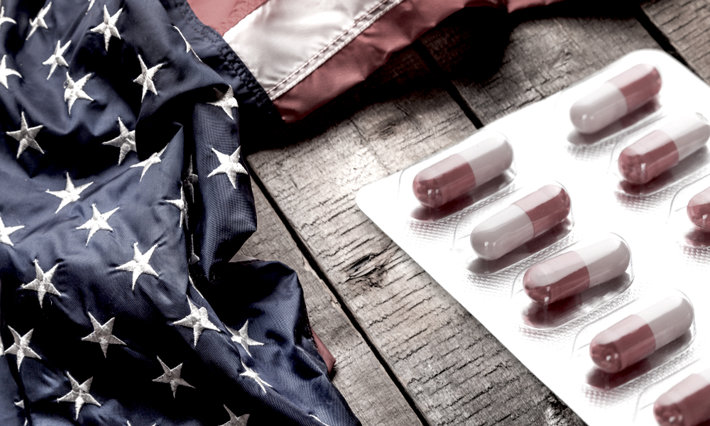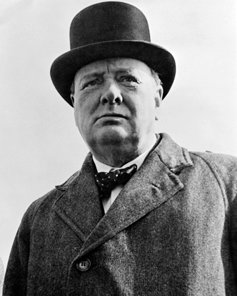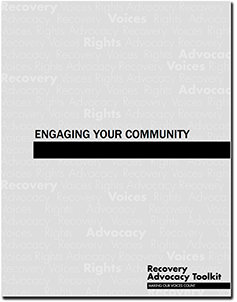What Will It Take to Overcome the Opioid Crisis? Our Combined “Blood, Toil, Tears and Sweat”

Is there anyone in America who is unaware of the catastrophic number of lives we lose to opioids and other drugs each year?
In 2017, we lost more than 72,000 Americans. That’s roughly the equivalent of wiping out Auburn, Washington; Alameda, California; or Lake Charles, Louisiana.
Already, billions of dollars have been spent on stemming this loss of life with only minor benefits.
It does appear that the constantly-increasing loss of life to drug overdoses has topped out. According to the Centers for Disease Control and Prevention, there began to be a slight decrease in these numbers starting in November 2017.
While any decrease is a blessing, there’s no reason yet to breathe a sigh of relief. When we beat back overdose deaths to the levels seen before our explosion of painkiller and heroin deaths, we will really have accomplished something good.
Consider this: In 1980, the number of drug overdose deaths was only 6,100. When we reduce overdoses to that low number (and then keep going till they are zero), it means tens of thousands of lives saved, hundreds of thousands of family members and other loved ones spared broken hearts.
A Tip from a Virginia Editorial
In January 2019, the editorial staff of the Richmond Times-Dispatch provided insight into what it could very well take to vanquish this problem.
“The opioid scourge has reached epidemic levels. It is quite literally killing us. We all know someone — young, old, rich, poor — who has succumbed. If we want to make 2019 the year that we finally turn things around, if not claim outright victory, we must treat this struggle as the war it is…”
This editorial states: “The opioid scourge has reached epidemic levels. It is quite literally killing us. We all know someone — young, old, rich, poor — who has succumbed. If we want to make 2019 the year that we finally turn things around, if not claim outright victory, we must treat this struggle as the war it is.”

The writer cited a 1940 speech from newly-elected British Prime Minister Winston Churchill to the House of Commons as he stepped into this job early in the war. He said, “I have nothing to offer but blood, toil, tears and sweat.”
The text of Churchill’s speech continues:
“You ask, what is our policy? I can say: It is to wage war, by sea, land and air, with all our might and with all the strength that God can give us; to wage war against a monstrous tyranny, never surpassed in the dark, lamentable catalogue of human crime. That is our policy.
“You ask, what is our aim? I can answer in one word: It is victory, victory at all costs, victory in spite of all terror, victory, however long and hard the road may be… I feel sure that our cause will not be suffered to fail among men. At this time I feel entitled to claim the aid of all, and I say, ’come then, let us go forward together with our united strength.’ ”
We are not fighting a war with a foreign government that threatens to overrun our borders and incarcerate our citizens. We are, however, fighting a covert enemy that already occupies every state and major city.
We are also fighting the lack of education that exists in our youth who think that a little drug use is absolutely harmless and a fun way to spend a night with their buddies.
We are still fighting overprescribing by medical doctors, dentists and veterinarians. Even though these numbers have begun to drop, they are still vastly higher than they were before opioids began to be so aggressively marketed in the mid-1990s.
For example, in 1997, there were 670,000 prescriptions handed out for OxyContinalone. By 2002, that number was up to 6.2 million. By 2012, there were 255 million bottles of addictive, narcotic painkillers handed out including oxycodone, hydrocodone, meperidine and others. By 2017, this number had dropped to 191 million—still astronomically higher than numbers in 1997.
Yes, our population has increased in that time interval. But not enough to allow for this much increase in painkiller prescriptions.
We Can All Contribute to the Effort
We are not all policemen, addiction counselors or legislators. Is there any way we can contribute to this fight?
What does a mother in St. Louis who has lost her son to fentanyl have to offer?
What can a pediatric nurse in Philadelphia or a family practice doctor in Seattle offer as a solution?
What about an auto mechanic in Boise? Or a taxi driver in Tampa or a short-order cook in Fresno?
Every single person has the same wealth to offer: their own blood, toil, tears and sweat. Any person aware of this problem can join the fight. How? Here are some ideas.
Finding Ways to Help

West Virginia has the highest rate of overdose deaths in the country. In a medium-sized town in that state, Firefighter Jan Rader pursued a nursing degree and then became fire chief. She has now opened an addiction treatment clinic in her town to save lives.
Many mothers or fathers who lost a son or daughter have banded together to support each other and reach out into the community to educate others on the problem and possible solutions.
For example, Barbara Theodosiou of the support group The Addict’s Mom was honored by the White House for her work to end the stigma associated with addiction and spread the word about recovery. The group she founded now has 20,000 members.
After starting to use drugs as a teen and serving three years in prison for robbery, Albert Ray Dancy began volunteering in prisons, running bible study groups. He went on to mentor young people to encourage them to stay in school. He’s now Reverend Dancy and the director of Saving All Vessels Equally, Inc.
Take Action
There are thousands of these stories—tens of thousands.
Every action you take, large or small, helps build strength on the side of survival for yourself, your family, neighbors and community. Here are some ideas for you.
- Talk to your child’s teachers or school superintendents. Ensure that every grade, every year has a proven drug prevention curriculum—one that has been monitored for success in other schools.
- Talk to school or community coaches. Young athletes are too often introduced to opioids after athletic injuries. Talk to school coaches, school counselors and community athletic coaches to make sure they are aware of this trend and take action to prevent pill misuse among their students.
- Talk to your dentist. Make sure he or she is aware that many teens’ first prescriptions of opioids come after their wisdom teeth are extracted. After an extraction, ask if it’s possible to substitute a non-opioid pain reliever instead. If opioids are provided, ask for a minimum number of pills.
- Talk to your city government members. Ask if it’s possible to eliminate or reduce alcohol sales at community events or at sporting venues.
- Support Drug Courts in your area that give addicted or drug-using individuals a second chance. While being monitored by the court, these individuals are given the time and incentive to get their lives on a better track.
- Show up at community anti-drug meetings and rallies. Carry a sign.
- If you have experience with past addiction on the part of a family member or yourself, speak out about it if you are comfortable. If you’re not, there are still hundreds of other ways to help.
- And above all, learn the signs of drug abuse and watch for them in your own family. Too many parents are blindsided when they learn their own children are using drugs.
- Set a good example for those around you by maintaining your own sobriety.
- And of course, ensure your children have their own understanding of the dangers of drugs or excessive alcohol use. The first times they are offered drugs or alcohol, you are probably not going to be nearby.

A short internet search can tell you about all the things communities around you are doing to help those in recovery or those who still need to find recovery. Then join in. Every group needs people to write letters, show up for meetings and rallies or talk to city government members. Your church may also have drug prevention or recovery activities going on.
Vanquishing this enemy is going to require the efforts of tens of thousands, maybe hundreds of thousands or even millions of people. When we work shoulder to shoulder, we have a chance to win.
It is our blood, toil, tears and sweat that will finally carry the day.


 ®
®